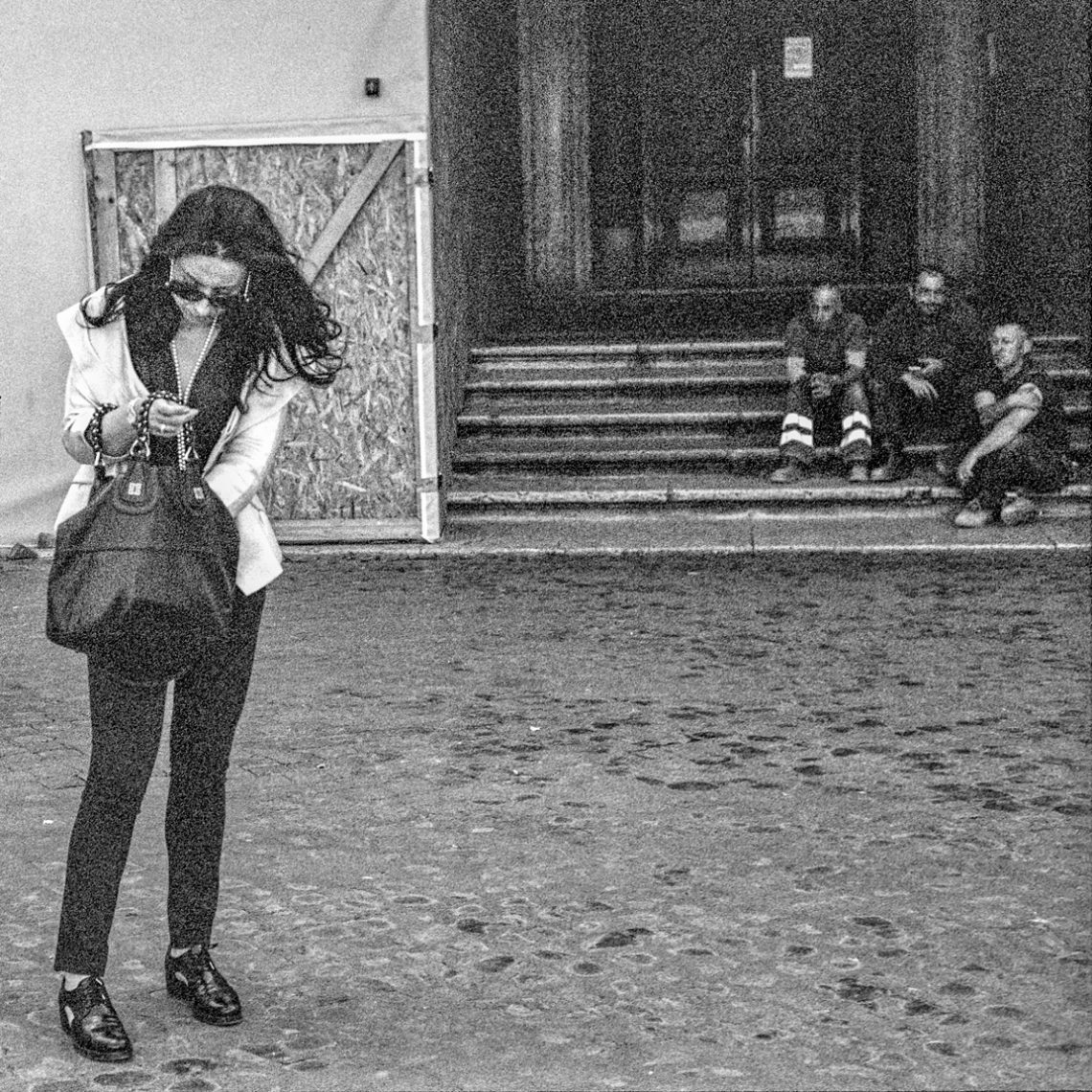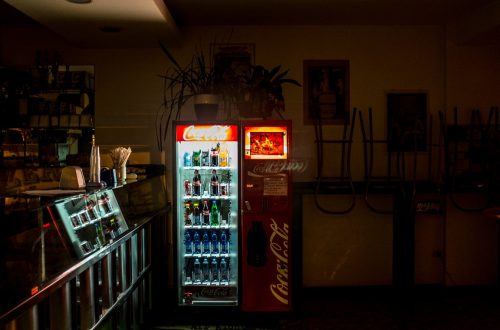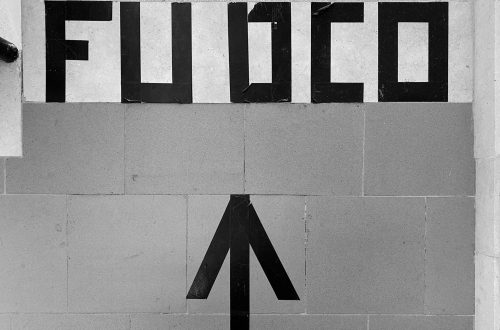
As Deep As The Ocean
Shot on high-speed film, probably pushed too far for its own good, this image leans unapologetically into its grain. That’s not a romantic defence—it’s noisy, and there’s no hiding it. But the grit serves the subject well. This isn’t a fashion shot, despite what the woman’s posture might suggest at first glance. It’s a street portrait in conflict, a moment of clashing worlds on a Roman piazza.
She walks absorbed in her bag—her hands, her head, everything drawn into that black void hanging at her side. And then, almost dismissed by distance and shade, the three men sit slouched on the steps, in hi-vis trousers, watching. They’re not interacting, not confronting, just present. The tension arises not from drama but from disparity. Space, class, rhythm—none of it aligns. And the wide gulf of cobblestone between them isn’t just compositional, it’s sociological.
From a technical standpoint, the frame works despite—or perhaps because of—its imperfections. Composition is balanced but uneasy: she takes the left third, diagonally poised, hair whipping like a loose bracket. The right side recedes into weighty shadows, where the workers’ eyes draw yours in slower motion. No clear focal point exists; the grain softens detail, flattens contrast, and yet your gaze moves with intent.
Exposure was metered for no one in particular. The result is murky, veering into underexposure for the background and slight overexposure on the woman’s white jacket. But that imbalance plays to the dynamic—she glows faintly, while they remain in the grey, figuratively and literally. The focus is soft, almost guesswork at that aperture. But in a frame built on subtle human geography rather than facial clarity, precision wasn’t the goal.
This is a photo that doesn’t scream for attention. It mumbles a question you can’t quite hear, but still feel compelled to answer.




